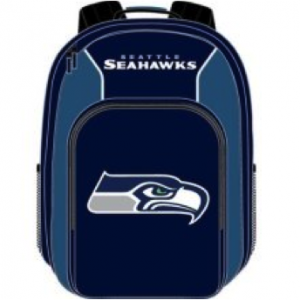Rotator Cuff Tears and Repairs
In the world of orthopedic surgery, there are few body parts as notorious as the rotator cuff. It’s one of those medical terms that has become a household name, and usually comes with a wince and a sympathetic nod when we hear it. Most people know of someone, a friend or family member, who has injured this particular part of the shoulder. We also see it in the sports news quite often.
In fact, now that football season is in full swing, we may hear more about Seattle Seahawks defensive lineman Michael Bennett who was diagnosed with a rotator cuff tear earlier this year. He played through the injury last season and plans to do it again this year, although he will likely need surgery in the off-season.
The rotator cuff is a group of four small muscles and tendons that surround the head of the shoulder. Their job is not so much to move the arm through space, but to provide dynamic stability to the shoulder. This means that as the larger muscles of the chest and shoulder create arm movement, the smaller rotator cuff muscles pull the upper arm into the shoulder socket. This design allows the ligaments of the shoulder to be relatively loose so that we can enjoy a vast degree of mobility, being able to reach in a near three hundred and sixty degree range of motion.
Tearing of the rotator cuff can happen in two ways. An acute tear happens suddenly, such as when you fall on an outstretched hand, or lifting a heavy object. There is generally the sudden onset of pain and a corresponding loss of function of the arm, to varying degrees.Tears can also happen slowly over time. As we age, the tendons of the rotator cuff become weaker and gradually fray. This is particularly so with the supraspinatous tendon, located on the top of the shoulder blade.
This muscle and tendon tends to get pinched between the shoulder blade and the arm bone, especially if theother rotator cuff muscles are weak. The supraspinatous also has poor blood supply, sotears often do not heal on their own, making surgical repair necessary to restore function.
Symptoms of a Rotator Cuff Tear
Symptoms of a rotator cuff tear include pain with movement of the shoulder and tenderness to touch. Inability to lift even household objects out to the side or overhead is also typical. Sometimes a person will not be able to actively lift the arm overhead due to abnormal movement within the joint itself.
Another indicator is a prior history of shoulder tendonitis or bursitis as this would point to excessive stress on the rotator cuff over time.
Treatment can be conservative for some tears, including physical therapy to improve shoulder mobility and progressively strengthen the cuff muscles. However, the majority of tears will likely require surgery if function of the shoulder is to be restored. Rotator cuff surgery has come a long ways in recent years, with many surgeries being arthroscopic.
This is a minimally invasive technique where the surgeon inserts a camera and surgical tools through small incisions in the shoulder. The instruments are only about a centimeter in diameter and can burrow through layers of muscle on top of the rotator cuff, whereas in past years these muscles had to be cut, making for longer recovery times.
During thesurgery, the torn rotator cuff tendon will be sutured together. The surgeon will also clean away any bone spurs that may have contributed to a degenerative tear.
If the tear is complex or involves additional procedures such as tendon transfers due to excessive degeneration of the rotator cuff tendon, then the surgeon may need to open the shoulder with a slightly longer incision. It involves more cutting of shoulder musculature and may slightly lengthen recovery time; however, from time to time it is necessary.
Fortunately, most repairs will not require this technique.Recovery is generally a four to six month process, involving four phases:
- Phase 1 (protection): Lasting from day one to four weeks, this stage of healing involves protecting the surgery. You will be required to wear a sling during most parts of the day. Gentle mobility exercises may be prescribed.
- Phase 2 (passive motion): Lasting until the sixth week, you will be prescribed physical therapy and begin moving the shoulder with assistance within a prescribed range of motion.
- Phase 3 (active motion): From weeks six through twelve, the focus will be on moving the arm and shoulder on your own, increasing the active range of motion.
- Phase 4 (strengthening): You should have improved mobility at this time, allowing you to focus on building full strength and function of the arm.
Undergoing a rotator cuff repair can be a lengthy process. The amount of time that you will be required to be away from work will vary depending on the physical demands of your job. This will all be discussed in depth during pre-operative visits so that you may plan accordingly.
However, if surgery is recommended, you should not delay for long, as the torn tissue becomes weak and shortened over time, making a successful repair more difficult.If you are experiencing persistent shoulder pain, please feel free to contact my office to arrange a consultation.
 It’s back to school season it’s time to clean out those backpacks to make room for the new school year!
It’s back to school season it’s time to clean out those backpacks to make room for the new school year! 

